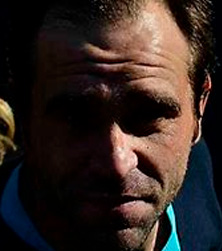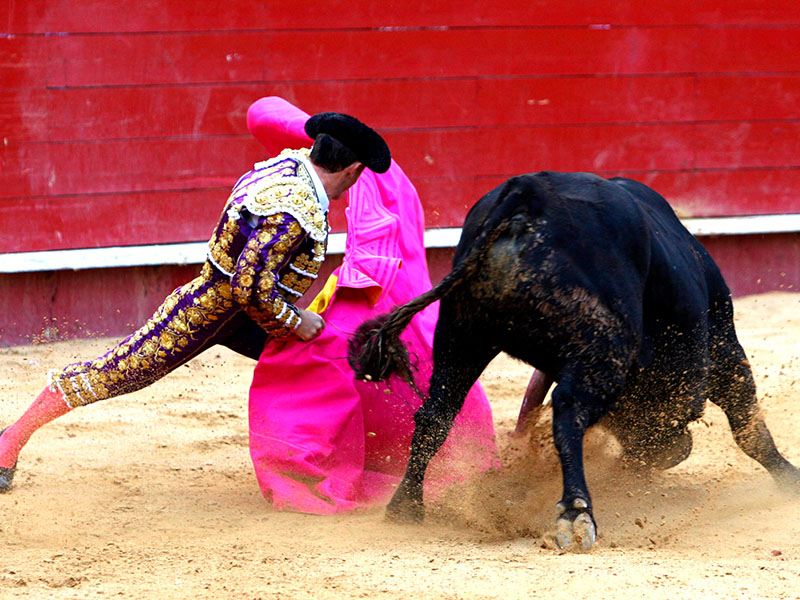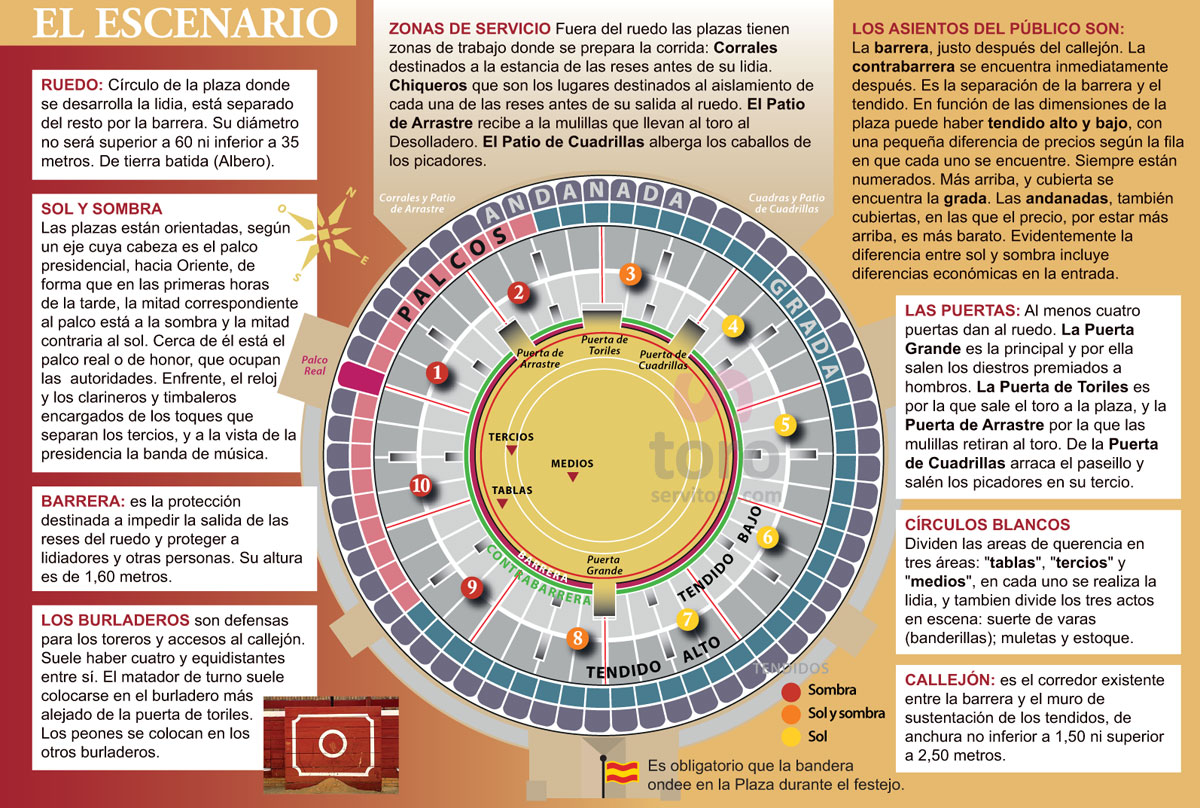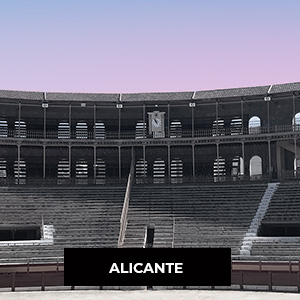The origin of the bullfighting cape
In 1701, Felipe V traveled to Spain to take possession of the throne. On the way, in the Gallic city of Bayonne, a bullfight is held in Navarre in his honor and during the fight they begin to see the cloak sets of El Licenciado de Falces that will later be immortalized by Goya in an etching. It is the origin of the current layer bullfighting.

Functions of the bullfighting cape
Bullfighting layer has very defined spatial functions during the fight. Stop, fix and get lucky. The cape provides casts of aesthetic seriousness, a deep spatial breadth and a great semantic and historical richness due to the names that have been given to the sets.
The presentation of the bull in the albero impacts by force. The appearance of the right-hander with the cape is less impressive, less powerful and quieter but more serene and rational. The cape gives the right-hander a strong and confident figure; It requires weight to be held with both hands, width to measure the distance between the arms and height to maintain a straight or slightly inclined pose depending on the cast.
The event is held from afar, a long and tense space that shrinks to mark the meeting place. The energetic thrust of the burel is reproduced against a moving brake that is the cape in the hands of the bullfighter. The violence of the onslaught slows down and the space of the animal and man is shared. This space-meeting contains a great vital and rational force. The bull and the bullfighter share pride and haughtiness but in a very different way, irrational the former and rational the latter. We can speak of a tense and living space in its essence and deeply aesthetic in its packaging.

Types of cape sets
There are many sets of cape that houses the art of bullfighting. Veronica‘s beauty, both aesthetic and semantic-historical, stands out; Lance, who receives her name from the image of Veronica, grasping with her hands the cloth in which the face of Jesus Christ was stamped and which is done by holding and advancing the cape with both hands, pulling back the opposite leg in order to attract the Onslaught and ending the cast advancing the previously delayed leg thus leaving the bull placed for the next Veronica. Chicuelina, quote identical to Veronica who finishes off the right-hander by turning in the opposite direction when the bull puts his head and dressing with the cape. La Gaonera, with the cape held by the back, with one hand gathered at the waist and the other extended marking the onslaught and the speed of the bull. The Lanterns, the Longs, the changed Longs, the Navarras, the Porta Gayola, the Butterfly, the Apron, the Naturales, the Cordovan, the Cutouts, the Galleos, the Aragonese, the Scissors, the Tijeriila on her knees, Abanicar … and so many and many sets with their inseparable stories and evenings.
Bullfighting cape is one of the greatest aesthetic delights that the Art of Bullfighting has. It is a perfect framework to feel in space the fusion of strength and reason. And a perfect moment to take out that Olé sense that is born from within.

Upcoming bullfighting events
Consult the calendar of bullfights in Spain: Seville, Valencia, Madrid… more than 150 bullrings and bullfighting shows.





















